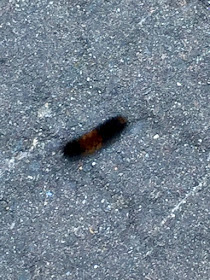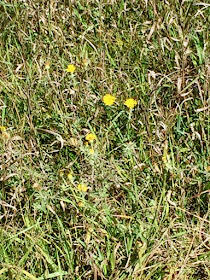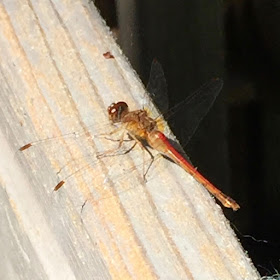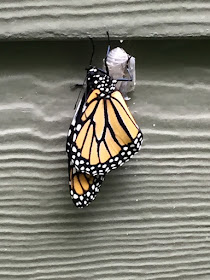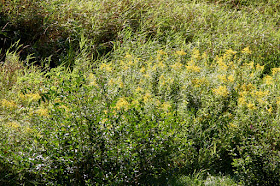 |
| late Summer, backyard turkey flock
Photo by J. Harrington
|
Yesterday, as we were driving through Northern Washington County, we saw several small flocks of turkeys, including some poults. They've been really scarce around the property this year. We've no idea why nor, for that matter, if they actually are scarce or we just haven't been seeing them. Other years we often got to watch flocks of hens and poults pecking their way through the fields behind the house. We've seen only one or two appearances so far this year.
Although this is Labor Day weekend, and the last day of meteorological Summer, we'll save waxing nostalgic for some other posting. There's no "back to school' excitement around here, the kids are all grown up and have been for many years. We basically had a staycation this Summer and we're still trying to figure out how it is that we managed to not do lots of the things we had on our list, things like more trout fishing and day trips to places like Crex Meadows. Fortunately, we still have some opportunities to work those in before the snow starts to fly. At least, we sure hope we do. But today is a quiet, lazy, end of Summer day so we're going to keep this short and sweet. Enjoy the holiday weekend and the start of meteorological Autumn tomorrow and, keep you eyes open for the rumored Northern Lights!
A second crop of hay lies cut and turned. Five gleaming crows search and peck between the rows. They make a low, companionable squawk, and like midwives and undertakers possess a weird authority. Crickets leap from the stubble, parting before me like the Red Sea. The garden sprawls and spoils. Across the lake the campers have learned to water-ski. They have, or they haven’t. Sounds of the instructor’s megaphone suffuse the hazy air. “Relax! Relax!” Cloud shadows rush over drying hay, fences, dusty lane, and railroad ravine. The first yellowing fronds of goldenrod brighten the margins of the woods. Schoolbooks, carpools, pleated skirts; water, silver-still, and a vee of geese. * The cicada’s dry monotony breaks over me. The days are bright and free, bright and free. Then why did I cry today for an hour, with my whole body, the way babies cry? * A white, indifferent morning sky, and a crow, hectoring from its nest high in the hemlock, a nest as big as a laundry basket.... In my childhood I stood under a dripping oak, while autumnal fog eddied around my feet, waiting for the school bus with a dread that took my breath away. The damp dirt road gave off this same complex organic scent. I had the new books—words, numbers, and operations with numbers I did not comprehend—and crayons, unspoiled by use, in a blue canvas satchel with red leather straps. Spruce, inadequate, and alien I stood at the side of the road. It was the only life I had.
********************************************
Thanks for visiting. Come again when you can.
Please be kind to each other while you can.
